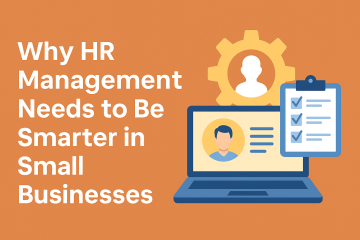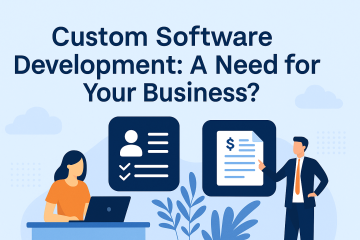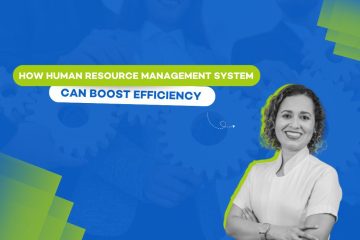Introduction
Managing employee reimbursements efficiently is a crucial aspect of human resource management. When done manually, reimbursement processes can be time-consuming, error-prone, and frustrating for employees and HR teams alike. However, modern Human Resource Management Systems (HRMS) provide a streamlined approach to handling reimbursements, ensuring accuracy, transparency, and compliance.
In addition to HRMS, payroll processing software plays a key role in automating reimbursement calculations and integrating them seamlessly with employee payroll. Together, these tools improve the efficiency of reimbursement management and enhance the overall employee experience. This article explores how HR software simplifies reimbursement processes and why businesses should invest in these solutions.
What is a Human Resource Management System (HRMS)?
An HRMS is a comprehensive platform designed to manage various HR functions, from payroll and attendance to employee benefits and reimbursements. By automating repetitive tasks and providing a centralized database for HR activities, an HRMS reduces administrative burdens and ensures smoother workflows.
Key Features of HRMS
- Payroll Integration: Combines payroll and reimbursement data for accurate payouts.
- Reimbursement Tracking: Tracks claims submitted by employees in real time.
- Custom Policies: Configures reimbursement rules based on organizational policies.
- Employee Self-Service Portal: Allows employees to submit claims, upload receipts, and track approval statuses.
- Compliance Monitoring: Ensures adherence to tax regulations and labor laws for reimbursements.
What is Payroll Processing Software?
Payroll processing software automates salary calculations, tax deductions, and other payroll-related tasks. It integrates with HRMS to ensure that reimbursements are factored into monthly payroll, providing a unified solution for employee compensation management.
Key Features of Payroll Processing Software
- Automated Calculations: Accurately calculates salaries, bonuses, and reimbursements.
- Tax Compliance: Adjusts reimbursements to meet tax regulations and exemptions.
- Direct Deposits: Combines payroll and reimbursement payments for timely employee payouts.
- Integration Capabilities: Syncs with HRMS for a seamless reimbursement workflow.
- Custom Reports: Generates detailed reports on reimbursement trends and tax implications.
Challenges in Manual Reimbursement Management
- Time-Consuming Processes:
Collecting, verifying, and approving claims manually takes significant time, delaying reimbursements. - Errors and Discrepancies:
Manual calculations often result in inaccuracies, leading to employee dissatisfaction and compliance risks. - Lack of Transparency:
Employees may face difficulty tracking the status of their claims, leading to frustration and confusion. - Compliance Issues:
Failing to adhere to tax regulations and organizational policies can result in penalties and audits.
How HR Software Streamlines Reimbursement Management
1. Automation of Claim Submissions
Employees can submit reimbursement claims through the HRMS self-service portal. The software verifies the claims against predefined policies, reducing manual intervention.
2. Real-Time Tracking
HR software enables employees to track the status of their claims in real time, from submission to approval. This transparency improves trust and satisfaction.
3. Policy Customization
Organizations can configure reimbursement rules in the HRMS to align with their specific policies, ensuring consistency and fairness.
4. Integration with Payroll
Reimbursements are automatically integrated with employee payroll, ensuring timely and accurate payouts without additional effort.
5. Compliance Assurance
The software ensures that reimbursements comply with tax regulations, including exemptions and limits, reducing the risk of penalties.
6. Reporting and Analytics
HR software generates detailed reports on reimbursement patterns, helping businesses identify trends, optimize budgets, and improve policies.
Benefits of Using HR Software for Reimbursement Management
- Time Savings:
Automating the entire process reduces administrative workloads, allowing HR teams to focus on strategic initiatives. - Increased Accuracy:
Automated calculations and policy enforcement eliminate errors and ensure fair reimbursements. - Enhanced Employee Satisfaction:
Transparent processes and timely payouts improve employee trust and morale. - Cost Efficiency:
Streamlined workflows reduce operational costs and prevent overspending on manual processes. - Improved Compliance:
By adhering to tax regulations and organizational policies, businesses minimize legal risks.
The Role of Payroll Processing Software in Reimbursements
1. Seamless Payroll Integration
Payroll processing software integrates reimbursement amounts into employee salaries, ensuring accurate payouts without additional manual effort.
2. Automated Tax Adjustments
The software calculates tax deductions or exemptions based on reimbursement policies, simplifying compliance.
3. Direct Deposits
Reimbursements are disbursed along with monthly salaries, eliminating delays and ensuring consistency.
4. Detailed Reporting
Payroll software provides insights into reimbursement trends, helping organizations optimize budgets and forecast expenses.
Future Trends in Reimbursement Management with HR Software
1. AI and Machine Learning
Artificial intelligence will predict reimbursement patterns and recommend budget optimizations, further enhancing efficiency.
2. Blockchain Integration
Blockchain technology will provide secure and transparent reimbursement records, reducing fraud and discrepancies.
3. Mobile Accessibility
Mobile-friendly HRMS platforms will allow employees to submit claims and track approvals on the go.
4. Advanced Analytics
Real-time analytics will help organizations identify trends, optimize policies, and improve employee benefits.
Choosing the Right HR Software
For businesses looking to adopt HR software for reimbursement management, partnering with a reliable provider is essential.
Key Considerations:
- Customization Capabilities: Ensure the software aligns with your reimbursement policies.
- Integration: Look for seamless integration with payroll and accounting systems.
- User-Friendliness: Choose a platform with intuitive interfaces for easy adoption.
- Support and Training: Opt for a provider that offers ongoing support and employee training.
- Scalability: Ensure the software can accommodate business growth and evolving needs.
Conclusion
Efficient reimbursement management is essential for maintaining employee satisfaction and ensuring operational compliance. Human Resource Management Systems (HRMS) and payroll processing software provide the perfect combination of automation, transparency, and accuracy, transforming reimbursement processes into streamlined workflows.
For businesses seeking to enhance their HR operations, investing in these tools is a strategic move. By adopting HR software, organizations can save time, reduce costs, and improve employee experiences, paving the way for long-term success.



0 Comments